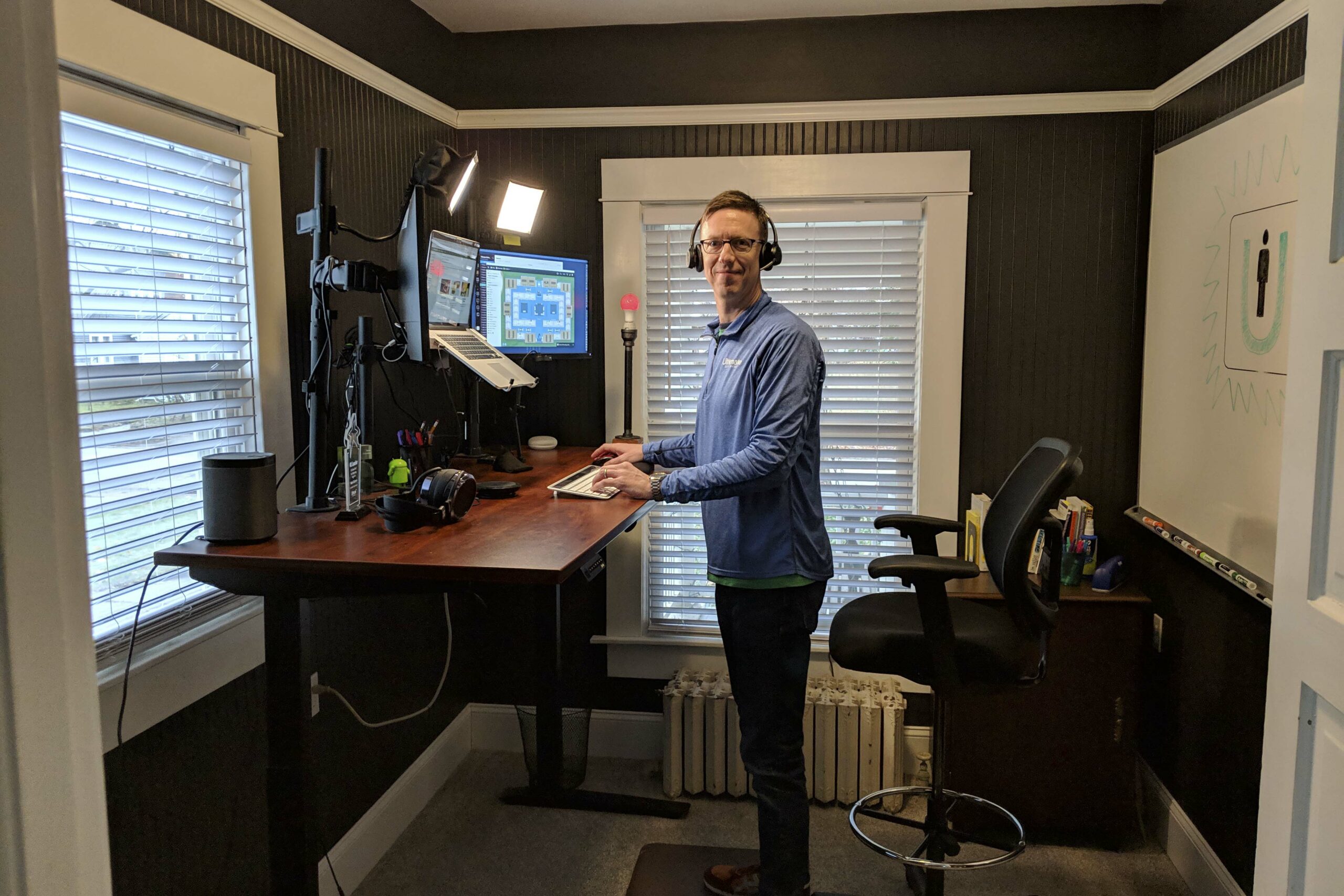Mark Eash Hershberger, a user interface artist employed at Formosa Group, a post-production sound company with operations in Los Angeles, works remotely from his home in Goshen, Indiana.
“I have always been interested in remote work because it didn’t limit me to what was geographically available, but it wasn’t until the pandemic a few years ago that companies became more conducive to remote workers,” Hershberger said.Hershberger creates images, animation and concepts with Adobe programs to enhance the user experience. His daily routine is fairly similar to that of other young parents. He makes breakfast and takes his children to school; then, however, he goes back home to sit at his desk.
“My mornings are fairly quiet since the rest of my team lives on the West Coast, and my first meeting normally won’t be until noon,” he said. “I work until about 5 most days; however, the occasional meeting might go until 6, but my team knows most days to not schedule meetings for me that late.”
Sometimes scheduling meeetings can get a bit more complicated than that. Meet another Goshen resident, Michael Neumann, a senior user interface artist for Minecraft, the Microsoft studio. He works for a studio that has headquarters in Stockholm, Sweden, and Seattle, Washington, a distance that equates to a nine-hour time difference.
“My day generally starts by connecting with my Stockholm counterparts so that our teams stay up-to-date on one another’s work before they sign off for their evening,” Neumann said. “From there I have a few hours to complete the individual tasks I have assigned to myself, until the inevitable Seattle meetings start and run till the end of the workday. So an unintended (but quite pleasant) side effect of being remote in EST is that my day is nicely divided into chunks where I collaborate with various teams or have some meeting-free hours to myself.”
Neumann said he did not start out intending to do remote work. It was something that was required due to the pandemic. Now he has a dedicated office space in his house for work. Neumann and Hershberger share more than their remote status; they’re both graduates of Goshen College who returned to live within walking distance of their alma mater.
Nate Osborne, a software executive and engineer, also studied at Goshen College and then left town to launch his career in a bigger market, in his case Atlanta. Now he’s back in Goshen to advance that career with the comforts of a smaller market.
Osborne is director of user experience design for UKG, a multinational technology company, with headquarters in Florida and Massachusetts. The company builds software for businesses to help manage their employees. The software helps with paying employees, tracking time, scheduling and more.
In 2017, Osborne would usually clock in early due to beating traffic in the morning. His wife, Kathleen Jones, who worked in elementary education in Atlanta, is now a therapist in Goshen. In Atlanta she had about a 25-minute commute and worked a teacher/administrator schedule, starting early and finishing early, with some additional planning at home in the evenings. Now she bikes to her office downtown and works about 30 hour per week, seeing clients for therapy sessions.
That same year, Osborne and Jones decided to move back to Goshen with their two daughters to be closer to his family.
He has never looked back.
“The work day is shorter without commuting,” he said. “When you’re done working, you can immediately join your family (and) friends in the next room.”
Another big advantage, he said, is the choice of where to live. With remote work, it is possible for people to live in places with a low cost of living, such as Goshen, while still receiving higher compensation that is scaled for larger cities.
“We were also tired of Atlanta traffic and the big mortgage on our house that required two good jobs to pay,” Osborne said. “Now we walk and bike to many places, and the girls frequently walk or bike to their friends’ houses. Goshen also has lots of great people and a thriving arts scene, especially for a city of this size.”
Despite the advantages of remote work, there are disadvantages to take note of. One of them is missing out on social interactions or what Osborne called “water cooler talk.”
Neumann said, “It’s hard to describe the value you get from being in the office with everyone next to you. There is a certain level of team building and camaraderie that you can’t replicate with a virtual setup.”
On balance, Neumann said, this city of nearly 35,000 in Indiana is the right home.
“Don’t get me wrong, there are many days where I miss living in a big city and the beauty of the Pacific Northwest,” Neumann said. “I have no regrets from the time I spent living there. The time I spent away from Goshen was really important in my life journey, but it’s been a great place to come back to.”



